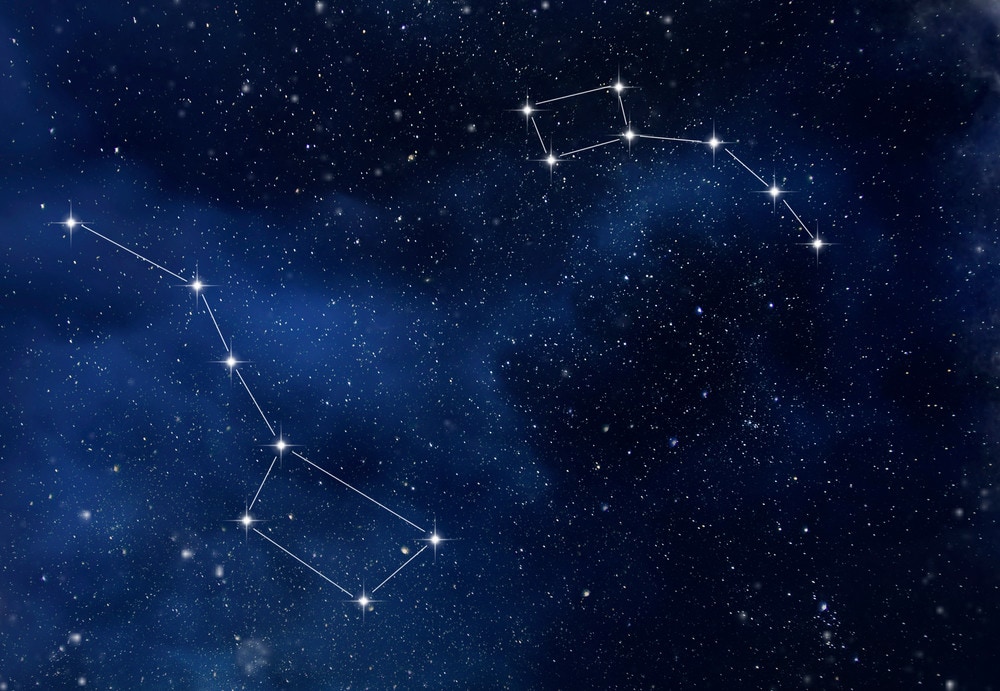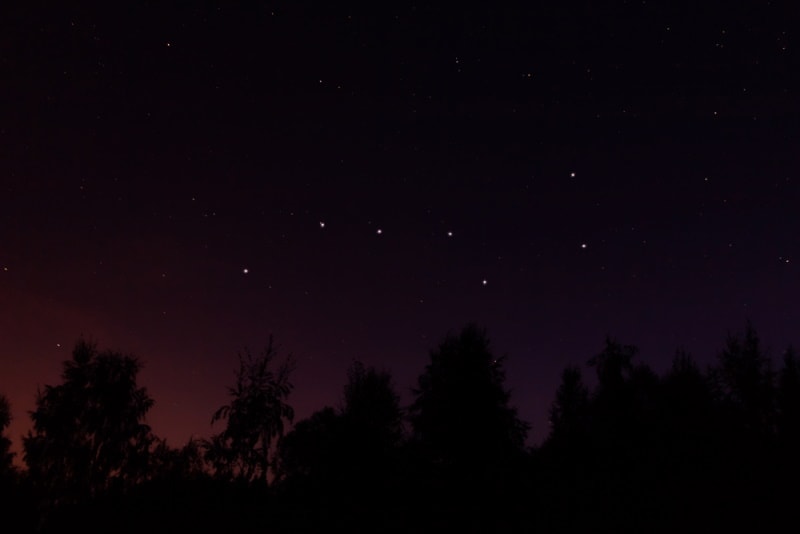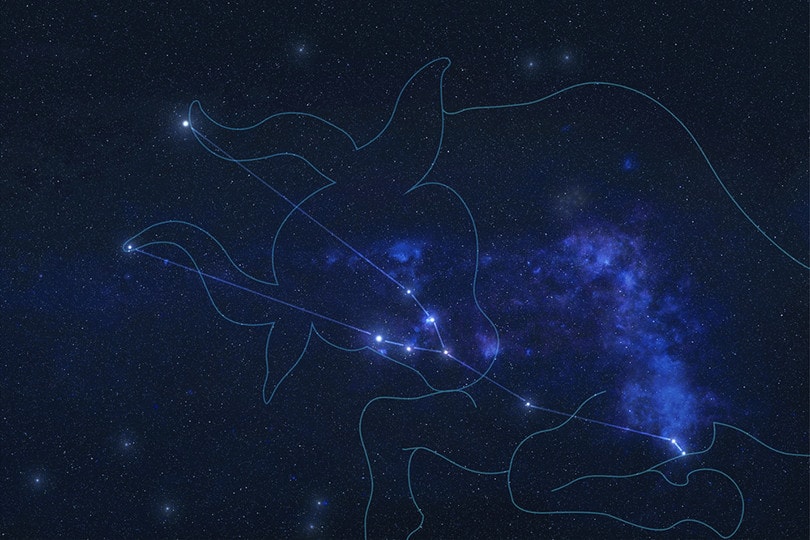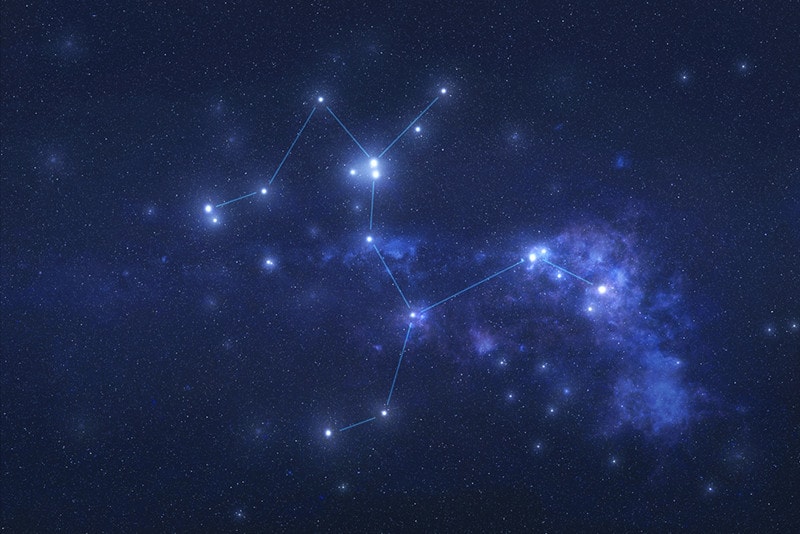What Is a Circumpolar Constellation? The Interesting Answer!
Last Updated on

The stars are the center of attention in the night sky, shining brightly and forming unique shapes that we call constellations. But there are different types of constellations, and we’ll be going over each of those today. However, we’re going to talk about circumpolar constellations the most, as there are a few interesting things about them that stand out from the rest. In short, a circumpolar constellation can be seen at any point in the year but only at particular locations, like the poles.
Let’s get into it!

Circumpolar Constellation
A circumpolar constellation is a type of constellation that can be seen during any time of year, but only in certain locations. As its name suggests, you can only see these constellations at the poles because the Earth’s rotation makes it so that the viewing area of the sky is the same no matter the situation. Unlike near the equator, where the sky is constantly changing.
Examples of circumpolar constellations at the North Pole are Ursa Major (the Big Dipper), Ursa Minor (the Little Dipper), Cepheus, and Cassiopeia. These constellations circle around Polaris (the North Star).
Examples of circumpolar constellations at the South Pole are Centaurus, Carina, and Crux. They circle around Earth’s South Celestial Pole (directly where the South Pole is pointing).
What Are the Different Types of Constellations?

Circumpolar
As we mentioned earlier, circumpolar constellations can only be seen near our planet’s poles, whether the South Pole or North Pole. Here, constellations do not change and are seen throughout the year because they never go below the horizon.
Zodiacal
Unlike circumpolar constellations, zodiacal constellations are based on the Sun’s movement more so than on Earth’s rotation. This type is the ecliptic, meaning that the Sun passes through their view. They’re also most commonly used as references to ‘star’ signs, which are given to those born in specific months of the year—hence why there are 12 signs total. This also means that there are a total of 12 zodiacal constellations: Aquarius, Sagittarius, Leo, Aries, Virgo, Libra, Scorpius, Capricornus, Cancer, Gemini, Taurus, and Pisces. All of these are related to specific animals.

Seasonal
Seasonal constellations are those that can only be seen during certain times of year, whether that’s during winter or summer. This is because Earth’s rotation reveals or hides these constellations from the horizon, which changes periodically. Seasonal constellation examples coincide with those in the zodiacal and circumpolar categories. For example, Taurus may be seen in the winter, but not during the summer in the northern hemisphere. There is a comprehensive map that you can take a look at which outlines all of the constellations and their observation status throughout the year.

Notable Circumpolar Constellations
Ursa Major
Also given the nickname ‘The Great Bear’ Ursa Major is a circumpolar constellation that appears in northern latitudes. Its mythology dates back to ancient Greek culture, as its brightest stars create what is known famously as the Big Dipper, which is one of the largest constellations in our night sky.
Cassiopeia
Titled after a queen in Greek mythology, this northern circumpolar constellation is iconic for its ‘W’-shaped star formation. Within this constellation is a plethora of nebulae such as the Heart Nebula, Soul Nebula, and Pacman Nebula. If you want to find this region of the sky, look for other familiar constellations such as Cepheus, Perseus, or Andromeda.

Centaurus
The southern circumpolar constellation, Centaurus, is named after a mythological creature that resembles a half-man, half-horse. This group holds the nearest star to our solar system; Proxima Centauri, as well as one of the brightest star systems in the sky: Alpha Centauri. The Centaurus constellation can be found at latitudes that lie between –90° and +25°.
Advantages of Circumpolar Constellations
The good thing about circumpolar constellations is that they allow viewers to continue similar stargazing opportunities at any time of year. This means that you can predict and have an exact layout of what the night sky will look like, which is great if you need to stargaze for a particular region and don’t want the Earth’s rotation to make them fall below the horizon. That’s also why it may be a better option for astrophotography than other parts of the world.
Disadvantages of Circumpolar Constellations
Due to the fact that circumpolar constellations are limited to one part of the world, observers won’t be able to view constellations that are exclusive to the southern hemisphere or closer to the equator. This can make the night sky seem repetitive compared to those close to equatorial regions.
Frequently Asked Questions (FAQs)

Why Is It Called a Circumpolar Constellation?
The term ‘circum’ comes from the Latin word for ‘around’ and ‘polar’, meaning ‘star’ or related to the stars. This was due to Polaris being the circumpolar reference for the constellations of the northern hemisphere.
How Do You Know If a Constellation Is Circumpolar?
Other than the examples we provided, the best way to identify a circumpolar constellation (or any star for that matter) is to check its location in the sky. To do this, you’ll have to estimate or find the exact latitude at which you are viewing the sky. All circumpolar stars and constellations will be at or less than 50° north, or, no more than 35° south.

Final Thoughts
Constellations are one of the many features that make our night sky an incredible sight to behold. Dating back to ancient civilizations, these outline pictures and mythological stories that we can enjoy while stargazing. Circumpolar constellations do a great job of allowing us to pinpoint certain areas in the sky, as they don’t change at any time of year at the North and South Poles.
Featured Image Credit: Savvapanf Photo, Shutterstock
About the Author Robert Sparks
Robert’s obsession with all things optical started early in life, when his optician father would bring home prototypes for Robert to play with. Nowadays, Robert is dedicated to helping others find the right optics for their needs. His hobbies include astronomy, astrophysics, and model building. Originally from Newark, NJ, he resides in Santa Fe, New Mexico, where the nighttime skies are filled with glittering stars.
Related Articles:
What Is the Best Binocular Magnification for Hunting? Optical Features Explained
15 Crucial Facts About Ultraviolet Rays & the Sun
What Constellation Is Spica In? The Interesting Answer!
10 Interesting Leo Constellation Facts, Myths, and FAQs
15 Interesting Pegasus Constellation Facts, Myths, and FAQs
6 Interesting Sagittarius Constellation Facts, Myths, and FAQs in 2024!
What Are Constellations? Where Did They Come From?
8 Interesting Libra Constellation Facts, Myths, and FAQs
